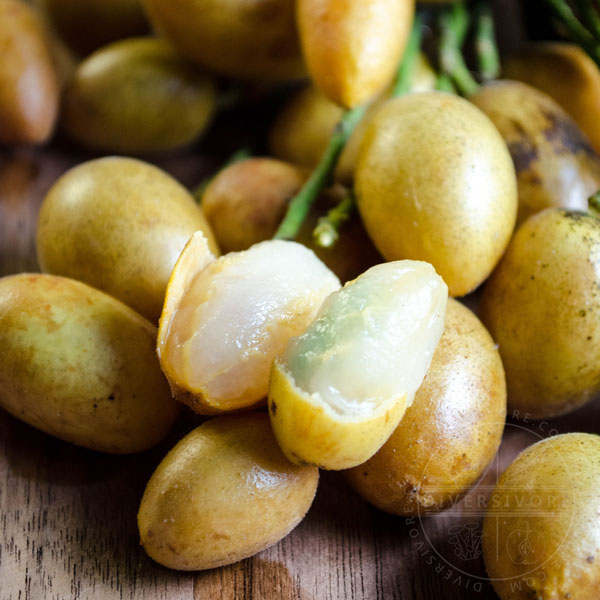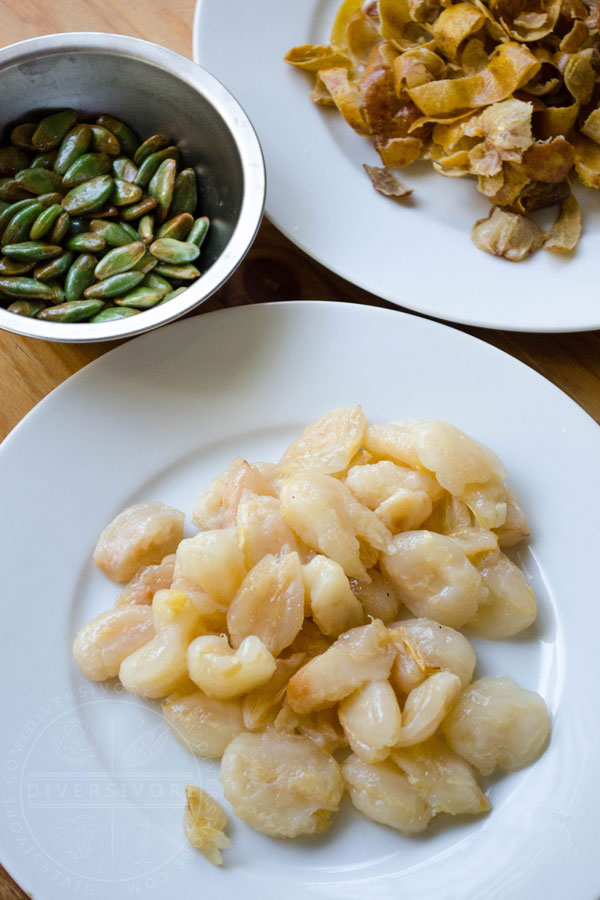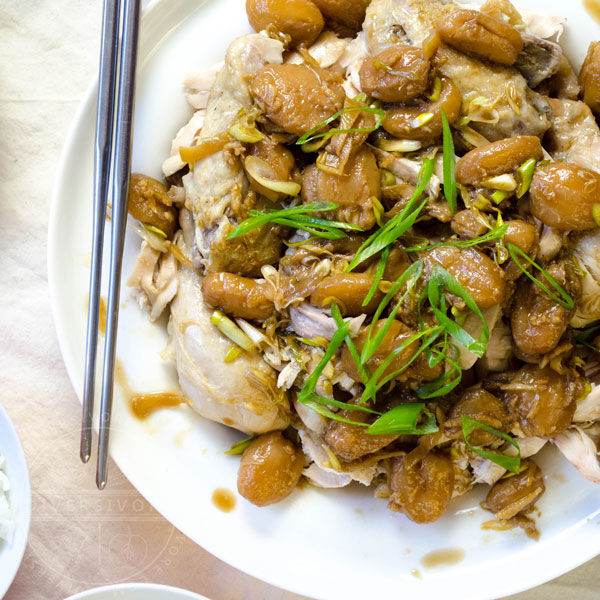How to Find, Choose, & Use
Wampee

Share this Guide
The Basics
What Are They?
The edible fruits of the wampee tree, a large, evergreen tree in the citrus family (Rutaceae) that's native to Southeast Asia. Other parts of the wampee tree are also used for preparing food.
Seasonality
Within Southeast Asia, Wampee is generally in season in mid SUMMER (June-July). In cooler regions, wampee may mature in the early FALL (August-September).
Flavour Profile
Sweet and sugary, with a pleasant sourness (note that some varieties are considerably more sour than others). The thin skin has a somewhat resinous, almost spiced flavour.
Other Names
English: Wampi
Chinese: 黄皮果 - huáng pí guǒ (Mandarin/Pinyin), wong4 pei4 gwo2 (Cantonese/Jyutping) - lit. "Yellow skin fruit"
Vietnamese: Hồng bì
Thai:มะไฟจีน (mafị cīn), ส้มมะไฟ (s̄̂m mafị)
Wampee FAQs
Are wampee similar to longan or lychee?
Biologically speaking - yes and no. While the fruits have a similar outward appearance to longan or lychee, wampee are actually a part of the citrus family. That being said, the two botanical families (Sapindaceae for lychee/longan and Rutaceae for citrus/wampee) are fairly closely related to one another.
From a culinary standpoint, wampee is fairly similar to longan or lychee, though it has a unique flavour all its own. The outer skin is fairly thin, and the interior flesh is juicy and sweet. Unlike lychee or longan, wampee usually contains several medium-sized seeds, rather than a single large central seed.
Can you eat wampee whole (i.e. with the skin)?
Yes, you can! Much like a kumquat, the small wampee fruit can be eaten whole. That being said, the seeds are often fairly large, and many choose to spit them out. The skin contributes some pleasant resinous/medicinal notes that are otherwise not really noticeable in the sweet flesh. The fruit can also be peeled and seeded (as shown below).

How-To
Find
Wampee is very popular in and around Hong Kong and southern China when in season, but can be quite sporadic or difficult to find otherwise. Check well-stocked Chinese grocery stores, especially those catering to Hong Kongers and South Chinese communities.
Choose
Wampee is usually sold on bundles of small branches. Look for unblemished, firm, somewhat yielding fruit on green, fresh-looking branches. Size and shape can vary between varieties, but most fruits will be either elongated or fairly round.
Prep
Difficulty: Easy to Moderate - If you're using wampee whole or eating them out of hand, simply wash and serve. If you're peeling and seeding the fruits, it will take a bit of time, but the process isn't particularly difficult. The skin peels away from the fruit without much trouble, and the flesh is firm enough to allow the seeds to be extracted without making too much of a mess.
Use
Generally eaten raw, but also cooked with meats, or in other dishes where the sweet/sour flavour is particularly appreciated. Wampee-based desserts are uncommon, but the fruit could certainly be used this way too. Dried fruit, bark, leaves, and roots are used to flavour some dishes (especially medicinal teas and soups).
Store
Short Term: Store in the refrigerator in a plastic bag for 4-5 days for purchased fruit, or for up to 10 days for freshly picked fruit.
Long term: Fresh wampee can't be stored for long periods of time, but it can be dried (e.g. with a dehydrator) and stored indefinitely.
Culinary Info
Flavour Profile
Sweet/Sour/Resinous - The flesh of wampee fruit is generally sweet with sour elements, thought some varieties are more sugar-forward than others. The thin skin has a somewhat resinous flavour, with elements of pine and camphor.
Substitutions
While the flavour of wampee if fairly unique, longan and lychee are somewhat similar in texture and flavour. Wampee tends to be a bit more sour however, so consider adding some lime juice or another souring agent. The flavour of wampee skin is somewhat difficult to replicate, but it's worth noting that the skins and the green leaves have similar flavours, and can be used to flavour steamed & roasted meats.
Cuisines
Wampee is very little known or used outside of southern China, Hong Kong, and parts of Southeast Asia, and thus is generally associated with the cuisines of those regions. In particular, wampee is popularly use to make a few local/regional meat dishes in Hong Kong and Hainan.
Flavour Pairings
The sweet/sour flavour of wampee is frequently enjoyed on its own, but is also paired with meats (especially rich, fatty meats), licorice root, Chinese herbs, ginger, and garlic. While wampee's flavour differs quite a bit from it's citrus cousins, the fruit can be paired in many of the same ways that one would pair tart fruits like lemons and limes.
Varieties
There are multiple varieties of wampee prized for their shape and sweetness, but most commercially available fruit is unlikely to indicate a particular type or variety. There are also several other closely related species (e.g. pink wampee), but these are extremely rare at any commercial scale. For more information about varieties, see "Need More Details" below.
More Info
Nutrition
The following is given for a single 100 gram (3.5 oz) serving of wampee pulp. I currently do not have access to nutritional information that includes the skin.
Low in calories and fat; Very high in Vitamin C, and a good source of Vitamin B3 (Niacin - 3.3 mg, or 21% D.V. for a 2000 calorie diet).Nutrition FactsWampee - 100 grams (3.5 oz)Amount Per ServingCalories 55 Calories from Fat 9% Daily Value*Fat 1g2%Potassium 281mg8%Carbohydrates 14g5%Fiber 1g4%Protein 1g2%Vitamin C 148mg179%Calcium 15mg2%* Percent Daily Values are based on a 2000 calorie diet.Top-To-Tail
Many parts of the wampee tree are edible. The fruit is the most commonly consumed part of course, but the bark, roots, and leaves are also used as to flavour some foods. The leaves look, smell, and taste somewhat similar to leaves of the curry tree (Murraya koenigii), which is also closely related.
GMO Status
There is no GM or gene-edited wampee in the food supply or in experimental settings.
Health & Science
- Various compounds found in parts of the wampee tree have been investigated for their potential medical applications. While most research is in fairly early stages, there is some suggestion that these compounds could display anti-cancer properties.
Organic vs. Conventional
Commercial wampee production is highly regional, and serves a fairly small global market. Certified organic products are fairly rare, however the trees are generally quite hardy and are grown with fairly minimal intervention.
Share this Guide


